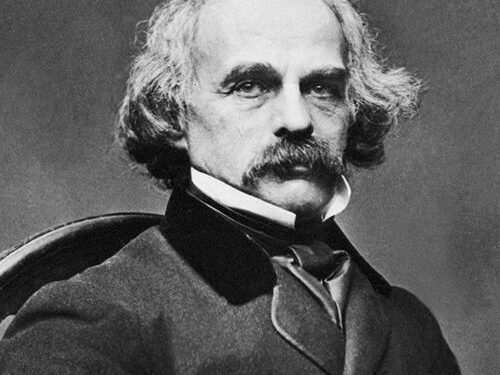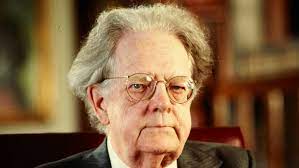Nathaniel Hawthorne Biography and Works
Nathaniel Hawthorne (1804-1864) was an American novelist and short story writer best known for his dark, psychological explorations of Puritanism and the human condition. He is considered one of the most significant writers of 19th-century American literature, alongside Edgar Allan Poe and Herman Melville.
Early Life and Education:
Nathaniel Hawthorne was born in Salem, Massachusetts on July 4, 1804, to Nathaniel Hathorne and Elizabeth Clarke Manning. His father was a sea captain who died when Nathaniel was only four years old, leaving his mother to raise him and his two sisters.
Nathaniel Hawthorne Biography and Works:-Hawthorne was a solitary child who loved to read and write. He attended Bowdoin College in Brunswick, Maine, where he met and befriended future president Franklin Pierce. After graduating in 1825, Hawthorne returned to Salem, where he spent the next 12 years writing and publishing his first works.
Also Read:-
- Tennessee Williams Biography and Works
- Jane Austen Biography and Works
- Geoffrey Chaucer Biography and Works
- William Blake Biography and Works
Early Career Hawthorne’s first published work was a collection of short stories called “Twice-Told Tales” (1837), which he published under the name “Nathaniel Hawthorne” (he added the “w” to distance himself from his ancestors, who had been involved in the Salem witch trials).
Nathaniel Hawthorne Biography and Works:-In 1840, Hawthorne published his first novel, “Fanshawe,” which was poorly received. He burned most of the copies and later disowned the work.
In 1842, Hawthorne married Sophia Peabody, a painter and illustrator, and the couple moved to Concord, Massachusetts, where they became friends with Ralph Waldo Emerson, Henry David Thoreau, and other transcendentalists.
Major Works :
Hawthorne’s most famous work is “The Scarlet Letter” (1850), a novel about Hester Prynne, a woman who commits adultery and is forced to wear a scarlet letter “A” on her dress as a symbol of her shame. The novel is a critique of Puritanism and explores themes of sin, guilt, and redemption.
Nathaniel Hawthorne Biography and Works:-Another notable work is “The House of the Seven Gables” (1851), a novel about a cursed family and their ancestral home in Salem. The novel explores themes of guilt, retribution, and the supernatural.
Hawthorne’s other major works include:
- “The Blithedale Romance” (1852), a novel based on his experiences at Brook Farm, a utopian community in Massachusetts.
- “The Marble Faun” (1860), a novel set in Rome that explores themes of sin, guilt, and the nature of art.
- “Tanglewood Tales” (1853), a collection of Greek myths retold for children.
- “A Wonder-Book for Girls and Boys” (1851), a collection of stories about Greek myths.
Hawthorne’s writing is known for its ambiguity, symbolism, and psychological depth. He often explored themes of sin, guilt, and the human condition, and his works frequently featured characters struggling with their own moral failings.
Nathaniel Hawthorne Biography and Works:-Later Life and Death In 1853, Hawthorne was appointed to a political post in the U.S. consulate in Liverpool, England, and he spent the next several years traveling throughout Europe. He later wrote about his experiences in a travelogue called “Our Old Home” (1863).
Hawthorne returned to the United States in 1860 and spent the last years of his life in Concord, Massachusetts. He died on May 19, 1864, at the age of 59, and is buried in Sleepy Hollow Cemetery in Concord.
Legacy :
Nathaniel Hawthorne Biography and Works:-Nathaniel Hawthorne’s works are considered some of the greatest works of American literature. He is known for his unique style of writing.
Themes and Style:
Nathaniel Hawthorne’s works are known for their dark, psychological explorations of Puritanism and the human condition. He often explored themes of sin, guilt, and redemption, and his works frequently featured characters struggling with their own moral failings. His writing is characterized by ambiguity, symbolism, and psychological depth.
Nathaniel Hawthorne Biography and Works:-One of Hawthorne’s primary themes is the psychological effects of sin and guilt. In “The Scarlet Letter,” for example, the protagonist Hester Prynne is forced to wear a scarlet letter “A” on her dress as a symbol of her adultery. The letter becomes a constant reminder of her sin, and she is unable to escape the shame and guilt that it represents. Similarly, in “The House of the Seven Gables,” the Pyncheon family is cursed by their ancestor’s greed and dishonesty, and they are unable to escape the guilt and shame that comes with it.
Hawthorne also explores the theme of the hypocrisy of Puritanism. He portrays the Puritans as strict and judgmental, and he shows how their strict moral code often leads to hypocrisy and intolerance. In “The Scarlet Letter,” for example, the Puritan community publicly shames Hester for her adultery, while ignoring the sins of the male characters who were involved. Similarly, in “Young Goodman Brown,” Hawthorne portrays a Puritan community that is secretly involved in witchcraft and other forms of sin.
Nathaniel Hawthorne Biography and Works:-Another theme in Hawthorne’s works is the supernatural and the power of imagination. He often used supernatural elements to explore the psychological and emotional states of his characters. In “The House of the Seven Gables,” for example, the ghost of Colonel Pyncheon haunts the house, representing the guilt and shame that the family feels. Similarly, in “The Birthmark,” a scientist becomes obsessed with removing a birthmark from his wife’s face, leading to tragic consequences.
Nathaniel Hawthorne Biography and Works:-Hawthorne’s writing style is often described as ambiguous and symbolic. He leaves many details of his stories open to interpretation, allowing readers to draw their own conclusions about the meaning of his works. His use of symbolism is particularly notable, as he often used objects and images to represent abstract concepts. For example, the scarlet letter “A” in “The Scarlet Letter” represents adultery, but it also represents other concepts such as sin, guilt, and redemption.
In addition to his literary works, Hawthorne was also known for his prose style, which was characterized by its simplicity and clarity. He was a master of the short story form, and his works are often praised for their vivid descriptions and careful attention to detail. His writing style was influential on later American writers, such as Ernest Hemingway, who also favored a simple, understated prose style.
Conclusion
Nathaniel Hawthorne is a significant figure in American literature whose works continue to be read and studied today. He explored themes of sin, guilt, and redemption in a dark, psychological manner, often using symbolism and ambiguity to create complex and thought-provoking stories. His writing style, characterized by its simplicity and clarity, was influential on later American writers and has contributed to his enduring legacy as a master of the short story form. Through his works, Hawthorne continues to challenge readers to grapple with the complexities of the human condition and to confront their own moral failings.
FAQ.
Q. When was Nathaniel Hawthorne born?
Ans. Nathaniel Hawthorne was born on July 4, 1804, in Salem, Massachusetts, United States.
Q. What was Nathaniel Hawthorne’s most famous work?
Ans. Nathaniel Hawthorne’s most famous work is “The Scarlet Letter,” a novel published in 1850 that explores themes of sin, guilt, and redemption in Puritan New England.
Q. What other works did Nathaniel Hawthorne write?
Ans. In addition to “The Scarlet Letter,” Nathaniel Hawthorne wrote several other novels, including “The House of the Seven Gables” and “The Blithedale Romance,” as well as numerous short stories, such as “Young Goodman Brown” and “The Minister’s Black Veil.”
Q. What was Nathaniel Hawthorne’s writing style?
Ans. Nathaniel Hawthorne’s writing style was characterized by its simplicity and clarity, as well as its use of ambiguity and symbolism to create complex and thought-provoking stories.

















